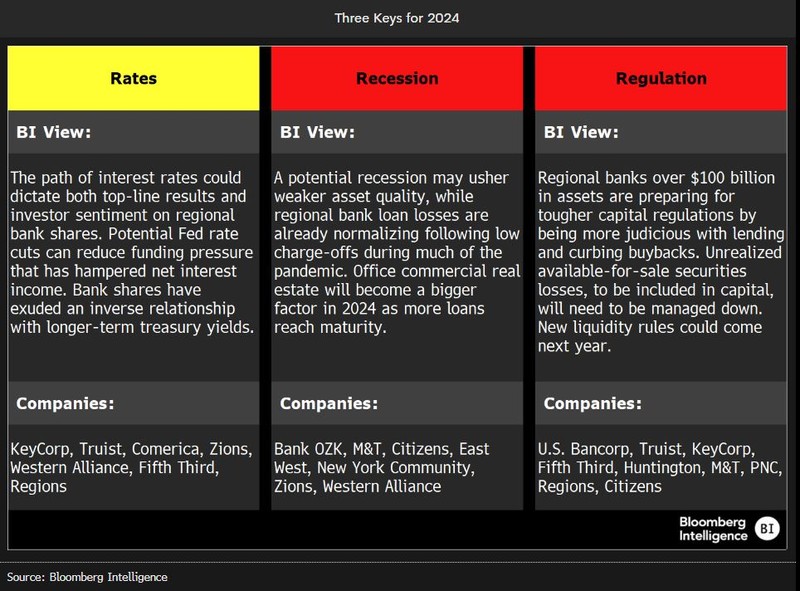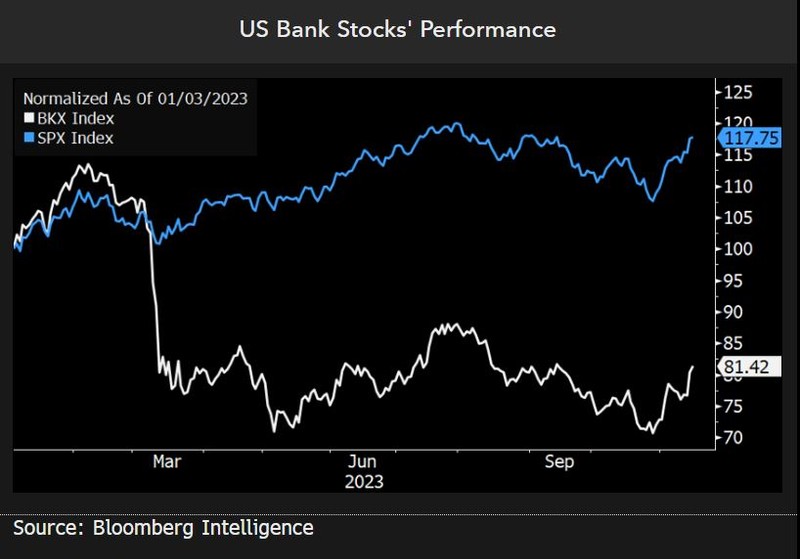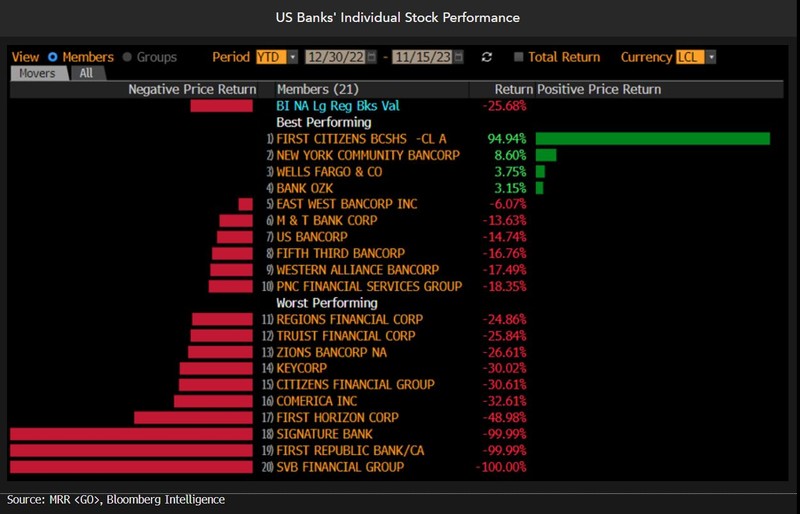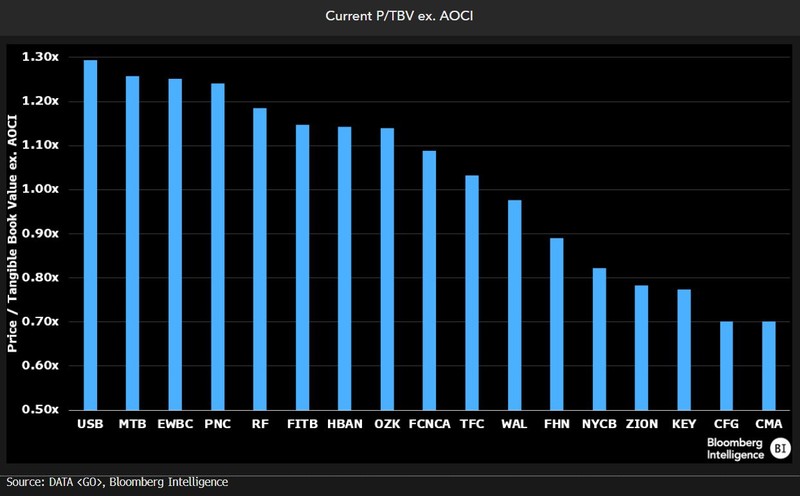This analysis is by Bloomberg Intelligence Senior Analyst Herman Chan and Associate Analyst Sergio Ferreira. It appeared first on the Bloomberg Terminal.
Following bank failures and aggressive interest-rate hikes, regional lenders face headwinds in higher funding costs, muted lending, tougher regulation and weakening credit quality. With the rising rate cycle nearing an end, net-interest margins could reach a bottom over the next few quarters, while potential rate cuts in 2024 would ease deposit pressure.
Though valuations reflect uncertainty and weaker earnings profiles, sentiment may be improving if inflation continues to dissipate and longer-term yields retreat. Banks that have weathered more rate and deposit challenges like KeyCorp, Comerica and Western Alliance could benefit from this scenario.

Regional bank stocks rally as inflation starts to fade
Sentiment on regional banks remains challenged amid soft fundamentals, with revenue suppressed by higher funding costs and muted lending. But the mood may be shifting as inflation eases and potential rate cuts loom. Lenders like KeyCorp, Zions and Western Alliance that were rattled by the earlier banking turmoil have rebounded further from October lows.
Bank stock rebound or just another head fake?
Despite deposit stability, weak sentiment on regional bank stocks remains amid concerns about profitability, regulatory pressure and looming credit losses. However, a potential end to the Federal Reserve’s interest rate-tightening cycle could improve investor views, as possible future rate cuts would ease lenders’ funding costs. Banks are up 15% from late October lows as the market incorporates the likelihood of rate cuts next year with inflation receding.
Still, the KBW Bank Index is down 18% year to date vs. a 17% increase in the S&P 500. Prior to March, performance had been solid relative to the broader market, following weakness in 2022. It was the failure of SVB that ushered in the current volatility.

Bank failures drag down group’s performance
The industry has stabilized following earlier bank failures, but performance has yet to fully recover. Though lenders have shored up funding and net interest margins are beginning to steady, a credit downturn is looming, particularly for those with office exposure. The BI US regional-bank peer group is down 27% year to date through Nov. 14. First Citizens and New York Community, which both secured FDIC-assisted deals that lifted book values and improved earnings power, have sustained gains. Bank OZK and East West, with strong growth trajectories and less regulatory pressure due to their size, have fared better.
Outside of the failures of SVB, Signature and First Republic, First Horizon has lagged behind as its valuation has reverted to peer levels after the merger with TD was called off.

Valuations struggle against multiple headwinds
Despite an equity rebound from October’s lows, regional bank multiples are hovering near historical troughs. At a median 1.1x price-to-tangible book value, the group’s valuation reflects a litany of concerns, including the path of interest rates, elevated funding costs, tougher regulation, weak balance-sheet growth and worsening credit quality. Unlike the financial crisis when banks like U.S. Bancorp, PNC and M&T were viewed as safe havens, regionals trade at a fairly tight band as premium multiples have contracted. For example, M&T currently trades at 1.3x vs. 1.7x during the height of concerns in 1Q09. This time, issues tied to lenders like SVB and worries over commercial real estate sit squarely in regionals’ purview.
Regionals’ trade at 8x on a forward P/E basis, a steep discount vs. the 18.6x for the S&P 500.
